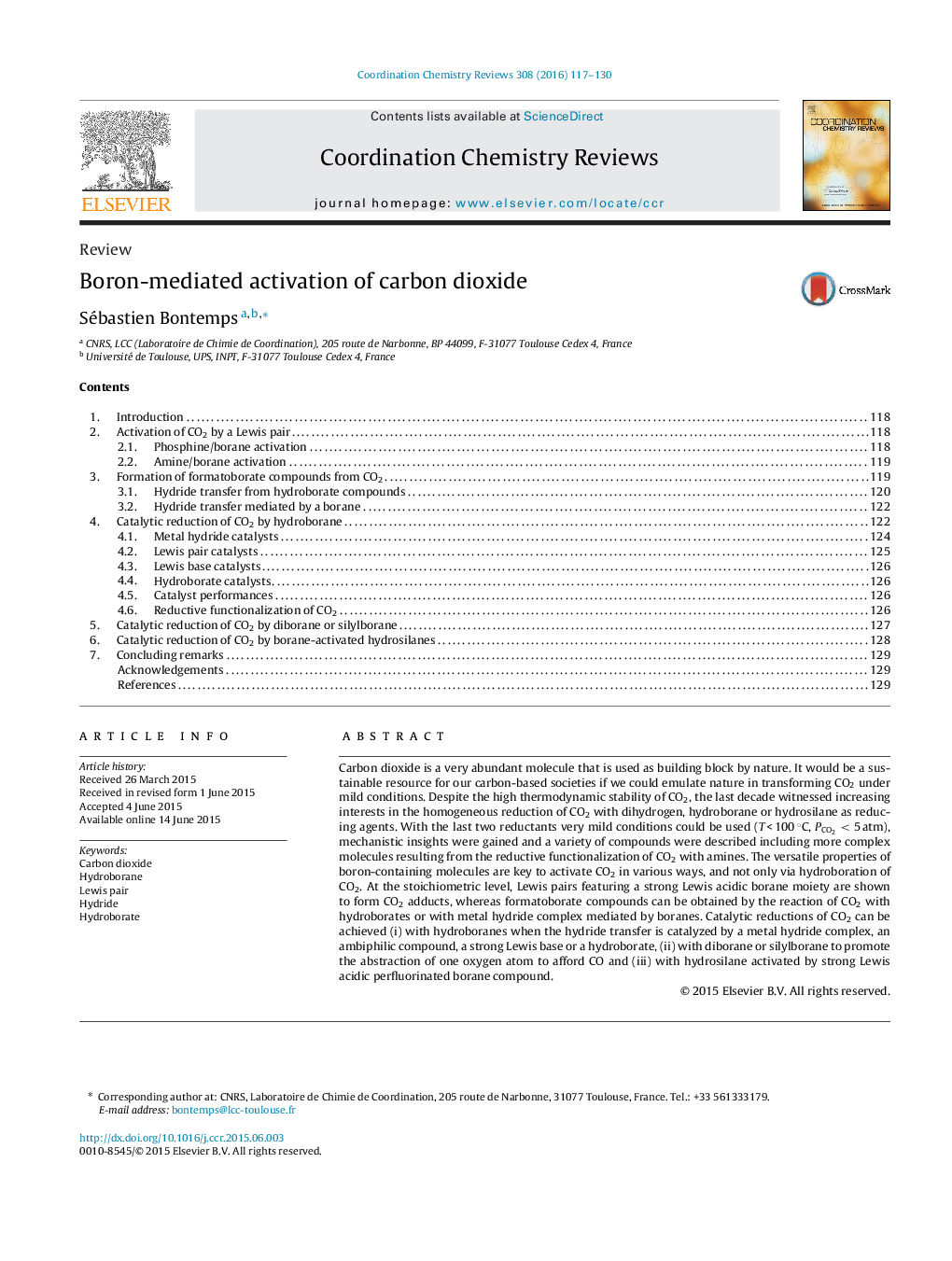| کد مقاله | کد نشریه | سال انتشار | مقاله انگلیسی | نسخه تمام متن |
|---|---|---|---|---|
| 1300850 | 974455 | 2016 | 14 صفحه PDF | دانلود رایگان |
• Stoichiometric activations of CO2 by (i) hydroborate and (ii) Lewis pairs featuring a Lewis acidic borane.
• Catalytic reductions of CO2 by (i) hydroborane, (ii) diborane or silylborane and (iii) hydrosilane activated by B(C6F5)3.
Carbon dioxide is a very abundant molecule that is used as building block by nature. It would be a sustainable resource for our carbon-based societies if we could emulate nature in transforming CO2 under mild conditions. Despite the high thermodynamic stability of CO2, the last decade witnessed increasing interests in the homogeneous reduction of CO2 with dihydrogen, hydroborane or hydrosilane as reducing agents. With the last two reductants very mild conditions could be used (T < 100 °C, PCO2<5 atm), mechanistic insights were gained and a variety of compounds were described including more complex molecules resulting from the reductive functionalization of CO2 with amines. The versatile properties of boron-containing molecules are key to activate CO2 in various ways, and not only via hydroboration of CO2. At the stoichiometric level, Lewis pairs featuring a strong Lewis acidic borane moiety are shown to form CO2 adducts, whereas formatoborate compounds can be obtained by the reaction of CO2 with hydroborates or with metal hydride complex mediated by boranes. Catalytic reductions of CO2 can be achieved (i) with hydroboranes when the hydride transfer is catalyzed by a metal hydride complex, an ambiphilic compound, a strong Lewis base or a hydroborate, (ii) with diborane or silylborane to promote the abstraction of one oxygen atom to afford CO and (iii) with hydrosilane activated by strong Lewis acidic perfluorinated borane compound.
Figure optionsDownload high-quality image (114 K)Download as PowerPoint slide
Journal: Coordination Chemistry Reviews - Volume 308, Part 2, 1 February 2016, Pages 117–130
